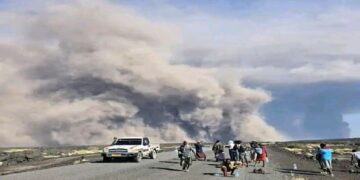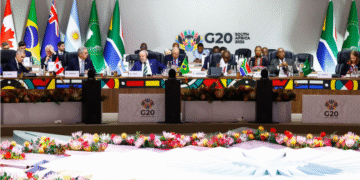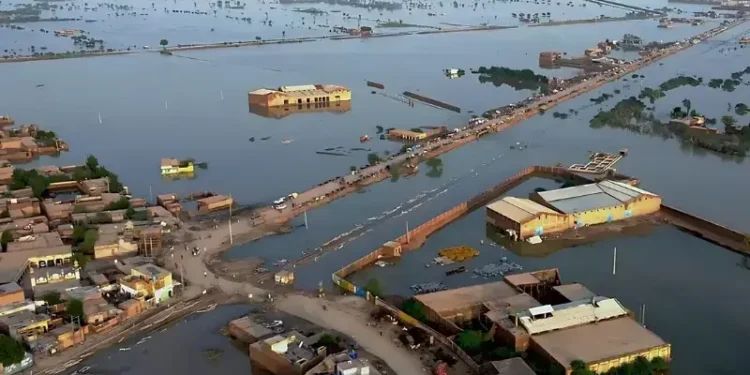ISLAMABAD: Pakistan has apprised the International Monetary Fund (IMF) of massive economic losses worth Rs371 billion inflicted by recent floods, warning that the devastation is likely to shave 0.3% off the GDP growth target for FY26.
According to a report published in The News, the Finance Ministry briefed the IMF review mission that the government’s original GDP growth target of 4.2%, approved by the National Economic Council (NEC) and Parliament, would now be revised down to 3.9% for the current fiscal year.
External Financing and Bonds
Officials informed the IMF that Pakistan requires $26 billion in external financing, of which $12 billion will be rolled over, with China already committed to supporting refinancing needs within the agreed timeframe. The government also indicated its plan to re-enter the international bond market in FY26, with a possible Eurobond launch in April-June 2026, conditional on a US Federal Reserve policy rate cut and improved credit ratings.
Separately, Pakistan intends to float Panda bonds in November 2025, raising $250–300 million in China, followed by another issuance in April 2026. The country must also repay $1.5 billion in Eurobond maturities, with $500 million already cleared on September 30, 2025, and another $1 billion due in April 2026.
Flood Impact: Human and Economic Toll
The floods affected 52 districts, impacting 6.5 million people and displacing 2.5 million. Official figures report 1,006 deaths, 1,063 injuries, and 12,569 houses damaged. Infrastructure losses include 2,133 km of roads, 248 bridges, 866 water supply systems, 1,098 schools, 128 health facilities, and 3.26 million acres of crops.
- Provincial Breakdown:
- Khyber Pakhtunkhwa (KPK): 504 deaths, 3,222 homes damaged, 437 km roads destroyed, 52 bridges lost.
- Punjab: 304 deaths, 238 homes damaged, 1,216 km roads damaged.
- Azad Jammu & Kashmir (AJK): 80 deaths, 2,017 houses damaged, 201 km roads, 94 bridges damaged.
- Gilgit-Baltistan (GB): 41 deaths, 1,260 homes damaged, 87 bridges lost.
- Sindh: 80 deaths, 281 houses destroyed, 7 km roads damaged.
- Balochistan: 30 deaths, 5,086 houses damaged, 99 km roads lost.
- ICT: 9 deaths, 65 homes damaged.
The livestock sector also suffered, with over 10,991 animals lost.
Agricultural Losses
The agriculture sector suffered Rs155 billion in damages, reducing growth projections from 4.5% to 4%. Major crops were hit hardest:
- Cotton: Loss of 1.5–2m bales, production revised to 8–8.7m bales.
- Wheat: Losses of 0.7–1.3m tons, output revised to 8.2–8.8m tons.
- Sugarcane: Production cut by 2.3–4.3m tons, from 80m to 76–78m tons.
- Maize: Losses of 0.5–1.3m tons.
Important crops alone accounted for Rs87 billion in losses, slashing their growth from 6.7% to 4.5%.
Sectoral Impact
- Industry: Growth revised down from 4.3% to 4.2%.
- Electricity, Gas & Water: Reduced from 3.5% to 2.9%.
- Services: Cut from 4% to 3.7%.
The floods impacted growth by: 2.2% in major crops, 0.5% in agriculture, 1.74% in infrastructure, 0.4% in housing, 0.6% in energy, 0.1% in industry, and 0.3% in services.
Government Response
Finance Minister Muhammad Aurangzeb, speaking to The News, said Pakistan is conducting a comprehensive damage assessment that will be shared with the IMF. He stressed that the government has not yet decided on imposing a flood tax, but adjustments could be considered after final evaluations.
Aurangzeb added that Pakistan’s resilience would help overcome the financial shock, and confirmed that US companies’ delegations would soon visit Pakistan to advance rare earth and mineral exploration projects.
The IMF review mission reportedly expressed satisfaction with Islamabad’s ongoing economic reforms and external financing commitments.







































































